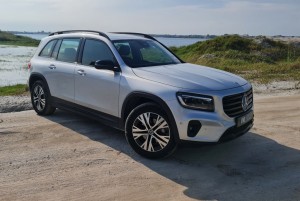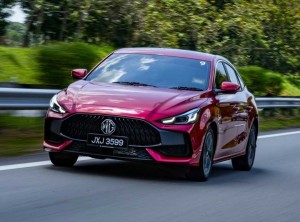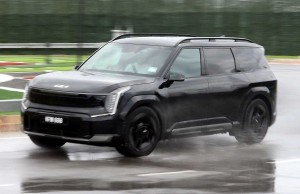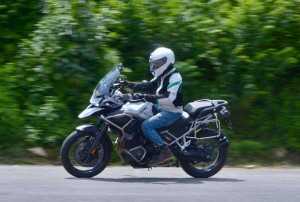PETALING JAYA: For a period of time, financial analyst Low Chiu Yen depended on ehailing services and feeder buses to commute to her office in Bandar Utama from the Surian MRT station in Petaling Jaya.
However, long wait times and ever-increasing fares left her feeling frustrated and sometimes late for work.
Then came the Demand-Responsive-Transit (DRT) van service, which was launched in the Bandar Utama zone in June.
Since then, Low has been using it twice a week to get to work and back.
She finds the service economical and convenient compared to ehailing services and buses.
She is among the hundreds of passengers who have now embraced the DRT services for their first- and last-mile connections before or after commuting on the rail service.
The DRT services in Selangor fall under two separate entities, namely Prasarana and Selangor Mobility Initiative.
The applications (or apps) for this service engaged by Prasarana’s DRT are Kumpool (recently rebranded into Kummute), Trek Rides and Mobi.
Selangor Mobility Initiative, meanwhile, engages with Mobi and Trek Rides.

There are in total nine LRT and MRT stations in Klang Valley under Prasarana’s DRT while the Selangor Mobility Initiative runs in 10 areas, namely USJ, Sunway, Ara Damansara, Taman Megah, Bandar Utama, Puchong, Ampang, Taman Melawati, Taman Keramat and UPM-Serdang (see graphic).
There are definite pros to taking the DRT compared to public and feeder buses.
“Journey by bus is longer as there are designated stops along the route. This makes it hard to estimate my arrival time but with the DRT, my traveling journey is shorter,” said Low.
She uses the easy-to-use Mobi app and has not faced any glitches.
“The DRT service has many stops that you can choose for pick-up. This provides flexibility,” she added.
Rapid Bus Sdn Bhd Commercial and Strategic Ventures head Khairil Khalid said the main reason Prasarana embarked on the DRT service was to save cost.
He said it cost around RM1,000 a day to operate bus services in an area, as opposed to only RM500 or less to operate the DRT van in a day.
“Our main aim was to reduce the operation cost of bus services. We then explored the DRT van services by engaging with the app providers. Our pilot project took place in 2022,” he said.
“The vans are owned and maintained by Prasarana and the drivers are under our payroll. The app services are by several service providers.
“We experimented at Wangsa Maju LRT station, which has high ridership and many college student users.
“The DRT rides were fully booked and we received good feedback. Youths are tech savvy and they have no problem using the app to make bookings.
“We next experimented the service at another station which was the Universiti LRT station and that too was a success.”

Prasarana officially rolled out the DRT service in May 2023 at the Alam Megah LRT station in Shah Alam which has low passenger occupancy for bus services.
“We had a record of just 200 people in a day who used the bus service at Alam Sham.
“In the first two weeks of the DRT service, we had both the bus and van services in operation.
“We managed to communicate with all the passengers to switch to the app and use the van service,” he said.
He said the passengers found the service comfortable, convenient and affordable.
“At the Alam Megah station, the ridership has increased from 20 passengers to 70 now through the DRT service.
“We also provide services at Glenmarie and Asia Jaya LRT stations,” he said.
However, Khairil admitted that seniors who were slower to adapt to the technology and those without smartphones faced challenges with DRT.
“We are also facing challenges with students who are not allowed to bring smartphones to school to utilise this service. We are working with the schools to address this.
“We have one regular senior passenger without a smartphone. We made an exemption for her to call our Prasarana headquarters’ main line and they will help her to book her ride through the app,” he said.
He added that all the three app providers engaged by Prasarana were licensed by Land Public Transport Agency (Apad) to provide this service.
Since this May, the DRT has recorded 120,000 ridership.
The waiting time is between six to eight minutes, and it costs only RM1 per ride.
“Since the inception of this service, we have reduced the number of buses by 14,” he said.
Former Section 14 RA chairman Selva Sugumaran welcomed the DRT service, but pointed out that in order to benefit seniors, it should be made to the door step.
“Seniors won’t be able to carry all their groceries and walk many metres from the drop-off point.
“If we are serious in ensuring the service reaches all segments of the community, it must be made door-to-door.
“Extra charges can be made if necessary for drop-off at the houses,” said Selva.
Currently, there are two service providers under the Selangor Mobility Initiative: Asia Mobiliti, which runs Trek Rides, and BadanBas Coach Sdn Bhd (BadanBas), which runs Mobi.
Trek Rides and Mobi charge RM2 per ride.
Asia Mobiliti chief executive officer (CEO) and co-founder Ramachandran Muniandy said DRT could respond dynamically to the changing demand patterns, allowing the operators to optimise their services.
“Conventional public transport like buses don’t have such flexibility due to their fixed routes and timetables, which are difficult to change once operations start.
“DRT is a hyper-localising transport service that caters to the needs of specific communities. No two zones are the same due to various factors such as demographics,” he added.
Asia Mobiliti, through its Trek Rides app provides DRT service in seven zones, from 6am to 10pm.
Among the zones with the highest demand is UPM-Serdang due to DRT’s popularity among university students.
Ramachandran said before DRT, there was a lack of first and last-mile options and people would either drive or use ehailing services.
“Ehailing is costly and not sustainable for those who cannot afford to use it regularly,” he said, adding that DRT was a cost-effective alternative instead.
BadanBas CEO Ibrahim Aiman Mohd Nadzmi said Mobi was in demand in Sunway, where most of the passengers were university students, and Taman Megah, where a majority of its passengers were working adults.

He said word-of-mouth was the best way to raise awareness about DRT.
“We used to conduct a marketing campaign at one of the train stations. We identified some students who were waiting for the buses there and explained the DRT concept to them.
“They instantly downloaded the app and started using the service right there,” he said.
Ibrahim Aiman said it was quite difficult to change those who were used to existing modes of transport when Mobi first joined the Selangor Mobility Initiative.
“In the initial stage, there were not many people for us to tap into as they were so used to driving or using ehailing for first and last mile connections.
“DRT is a completely new concept in Malaysia. Just like any new products, people need time to understand it,” he said.
Unlike ehailing, DRT has fixed operating hours and prices.
He added that BadanBas was looking at expanding Mobi’s coverage in Klang Valley.
“Our ultimate goal is to allow the people to see the value of public transport so that they can make it their first choice.
“The government’s support is essential for us to scale our service to achieve this goal,” he said.
Both Ramachandran and Ibrahim said they do not intend to compete with other modes of transport.
Their aim is to complete the existing public transport ecosystem by improving first- and last-mile connectivity.













